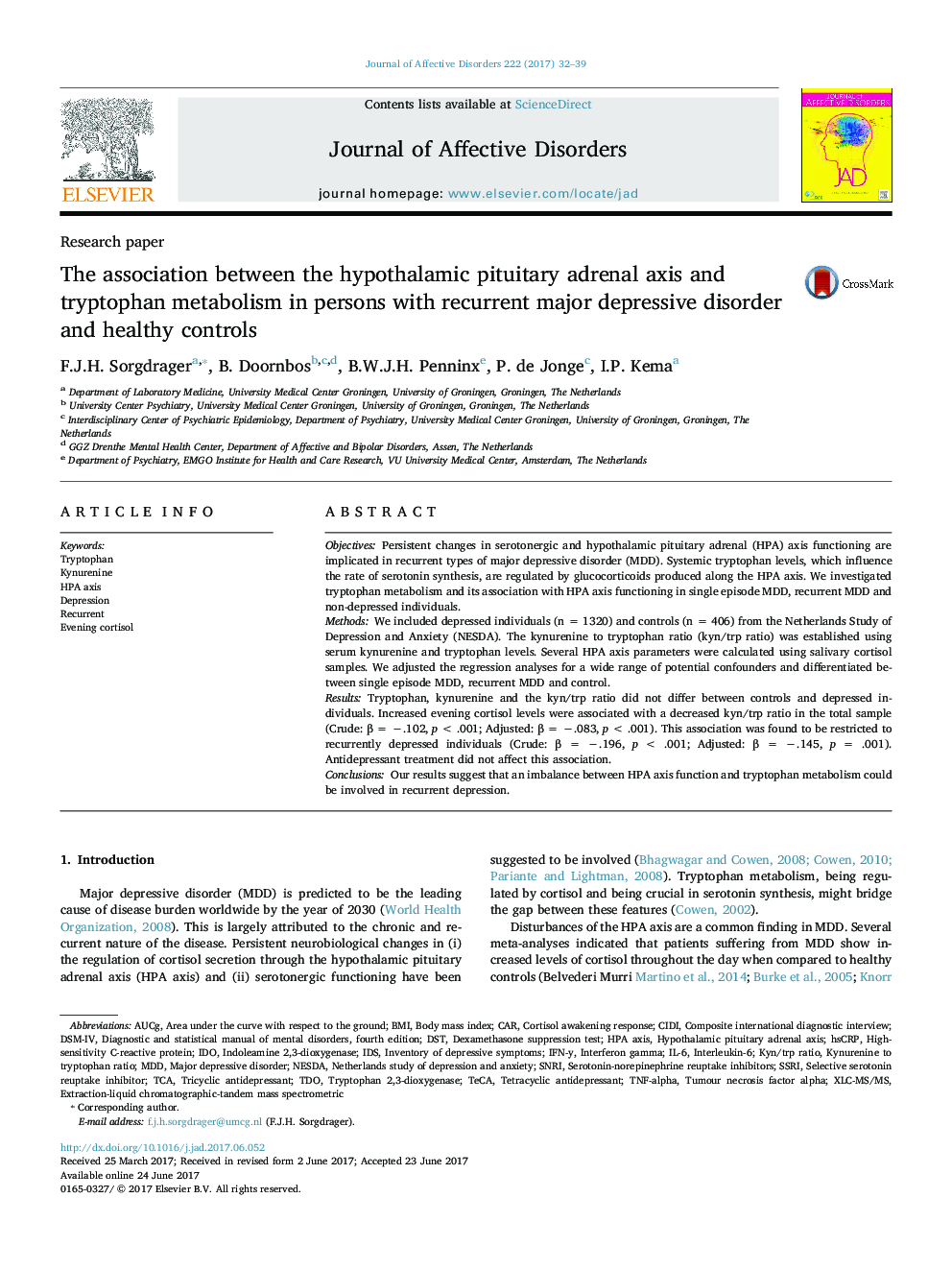| کد مقاله | کد نشریه | سال انتشار | مقاله انگلیسی | نسخه تمام متن |
|---|---|---|---|---|
| 5721839 | 1608103 | 2017 | 8 صفحه PDF | دانلود رایگان |
- No differences in trp metabolism in controls and first episode MDD.
- Raised evening cortisol was associated with a reduced kyn/trp ratio in recurrent MDD.
- This association was not affected by the use of antidepressant treatment.
- Imbalance between HPA axis function and trp metabolism is implicated in recurrent MDD.
ObjectivesPersistent changes in serotonergic and hypothalamic pituitary adrenal (HPA) axis functioning are implicated in recurrent types of major depressive disorder (MDD). Systemic tryptophan levels, which influence the rate of serotonin synthesis, are regulated by glucocorticoids produced along the HPA axis. We investigated tryptophan metabolism and its association with HPA axis functioning in single episode MDD, recurrent MDD and non-depressed individuals.MethodsWe included depressed individuals (n = 1320) and controls (n = 406) from the Netherlands Study of Depression and Anxiety (NESDA). The kynurenine to tryptophan ratio (kyn/trp ratio) was established using serum kynurenine and tryptophan levels. Several HPA axis parameters were calculated using salivary cortisol samples. We adjusted the regression analyses for a wide range of potential confounders and differentiated between single episode MDD, recurrent MDD and control.ResultsTryptophan, kynurenine and the kyn/trp ratio did not differ between controls and depressed individuals. Increased evening cortisol levels were associated with a decreased kyn/trp ratio in the total sample (Crude: β = â.102, p < .001; Adjusted: β = â.083, p < .001). This association was found to be restricted to recurrently depressed individuals (Crude: β = â.196, p < .001; Adjusted: β = â.145, p = .001). Antidepressant treatment did not affect this association.ConclusionsOur results suggest that an imbalance between HPA axis function and tryptophan metabolism could be involved in recurrent depression.
Journal: Journal of Affective Disorders - Volume 222, November 2017, Pages 32-39
